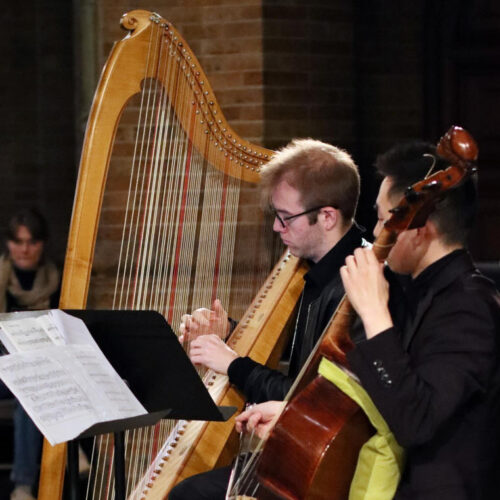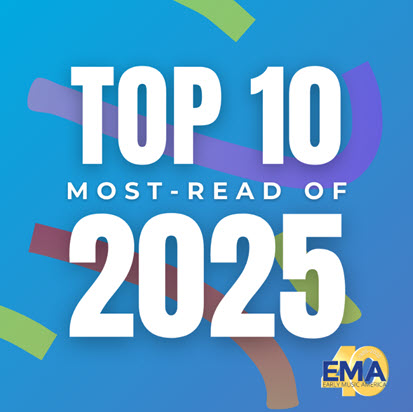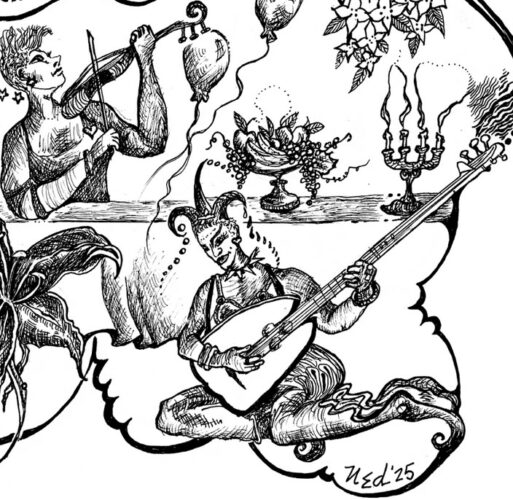by Laurence Vittes
Published September 30, 2019
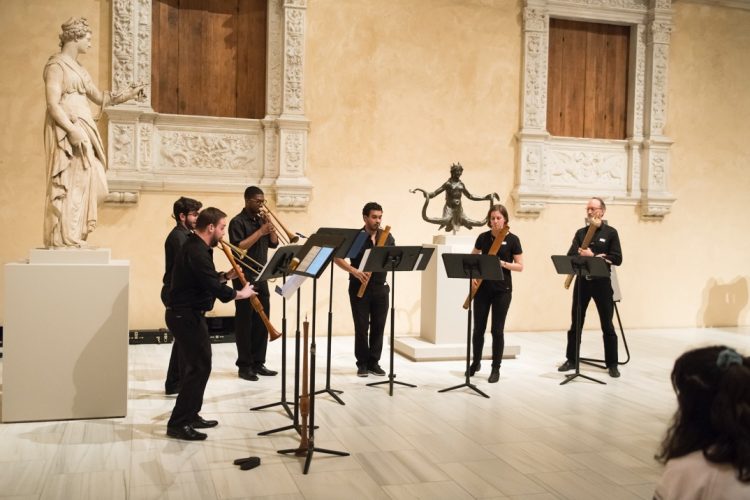
Two recent developments in the North American early-music world signaled a changing of the guard. Richard Egarr was named Nicholas McGegan’s successor as music director of the Philharmonia Baroque Orchestra & Chorale in San Francisco and Harry Christophers announced that he will step down as artistic director of the Handel and Haydn Society in Boston at the end of the 2020-21 season.
The outlines of North America’s exciting landscape of period-instrument ensembles are taking shape as Christophers opens his penultimate season with H+H on Oct. 4 with a Mozart program, Egarr leads Juilliard415 in music by Handel and Avison/Scarlatti on Oct. 11, and Philharmonia Baroque begins its final season under McGegan Oct. 17-20 with pieces by Handel and a world premiere by Pulitzer Prize winner Caroline Shaw.
Meanwhile, north of the border, “Tafelmusik Meets Tchaikovsky” was the recent, innovative opening program of the vastly successful Tafelmusik Baroque Orchestra, which teamed the Russian composer’s Serenade for Strings with music by Mendelssohn and a world premiere by Canadian composer Andrew Balfour.
Numerous North American cities and communities possess first-rate period ensembles, from San Francisco and Boston to New York, Los Angeles, Houston, Boulder, Portland, Seattle, San Diego, Toronto, and well beyond. Philadelphia sports both Tempesta di Mare and Piffaro, while Cleveland claims Apollo’s Fire and Les Délices. Haymarket Opera Company in Chicago is gaining attention.

Egarr, who begins duties as music director of Philharmonia Baroque with the 2020-21 season, is thrilled to be able to share his view of historically informed performance with that ensemble and Juilliard415. “One looks at the music in its total historical context, and, having absorbed as much information as possible to inform our understanding, we try to deliver it in as committed and meaningful a way as possible to engage a modern bunch of people. What’s not to be excited about?”
After ten years at H+H, Christophers talks about how period groups like Philharmonia Baroque and H+H have become beacons for large period ensembles in America, and how major theaters and concert halls are beginning to take notice. “The audiences that come to listen to this music are revitalized and invigorated. We’re making music sound new, in forms of playing that are vibrant and wonderfully stylistic. We’re feeding off the great work being done at Juilliard, which is brilliant.”
H+H president and CEO David Snead reports that the organization’s Boston audience has been growing tremendously, “up 50 percent in the last five years.” To explain the phenomenon, Snead singles out Christophers’ “commitment to making the concert experience a shared experience. That sense of connection and knowing each other, and sharing, we do a lot. One person described the heightening of the musical experience to me as ‘individuation,’ the ability to hear each individual musician’s contribution to the music.”
Christophers’ enthusiasm is infectious, says Snead. “We come out and perform with swagger. We’re going to win you over with our performance! It’s all super exciting.”
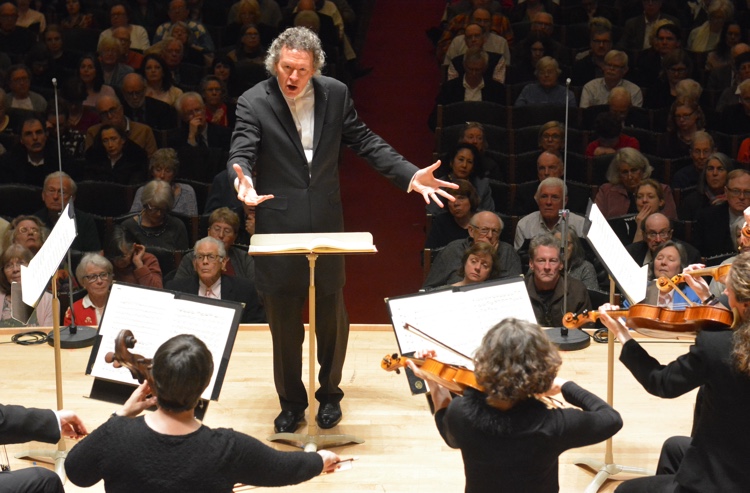
Snead is also excited about the diverse gifts of the H+H players. The orchestra’s new principal flute, Emi Ferguson, for example, is an English-American Juilliard grad who “has a tremendous career going,” says Snead. “She’s experimenting with crossover approaches to Baroque music in a contemporary idiom. She has a group called Ruckus. Her presence onstage together with other young musicians, like our concertmaster, Aisslinn Nosky, delivers an attitude that this is not your grandfather’s H+H.” (Ferguson and the baroque band recently released a recording, Fly The Coop: Bach Sonatas and Preludes, selections from which they’ll perform Nov. 17 at New York’s Corpus Christi Church as part of the Music Before 1800 series.)
Violinist Robert Mealy, director of historical performance at Juilliard’s graduate-level, full-tuition scholarship program for early music, grew up in the Bay Area when Philharmonia Baroque was “crystallizing into existence” and then dropped out of college to join Tafelmusik. He views New York’s early-music scene as healthy. “We’re coming up on our 10th anniversary at Juilliard, and it’s great to see New York transformed from a city that had a lot of early-music performances under the radar to there being much more on the map.”
Juilliard415’s ascent has been impressive: Just last season, the period-instrument ensemble offered an all-Rameau program with Juilliard dancers and a fully staged production of Purcell’s Dido and Aeneas that traveled to London and Versailles in June, and it made a Scandinavian tour with the Yale Schola Cantorum pairing Haydn’s Lord Nelson Mass with a commissioned work by Pawel Łukaszewski.
Like Juilliard and Indiana University’s Jacobs School of Music, many universities and conservatories are training a flow of superb young musicians, educators, musicologists, administrators, and writers of professional caliber in the wonders and mysteries of early music. They are learning entrepreneurial skills that go along with the idea of freewheeling early musicians and their careers. As models, they can look to leaders like Philharmonia Baroque and H+H alongside entrepreneurs like the San Francisco-based Voices of Music, in addition to their peers.
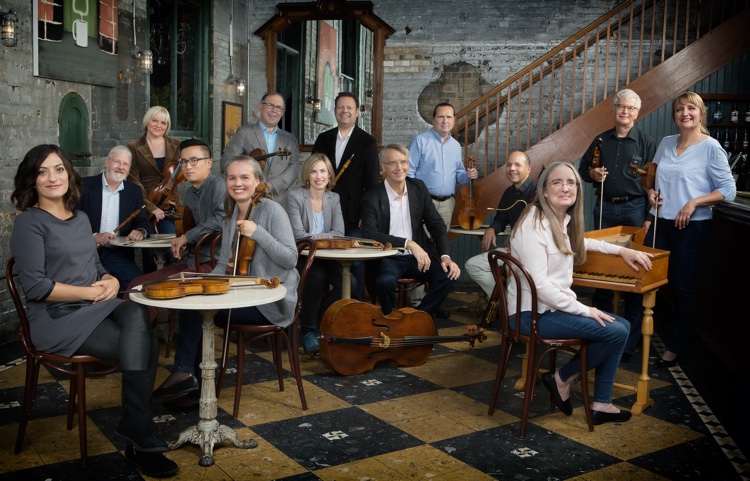
In Toronto, Tafelmusik’s Artist Training Programs enroll 100 pre-professional and professional musicians from some 15 countries, the U.S. in particular, for orchestra and choir rehearsals, master classes, opera scene study for singers, chamber ensembles, private lessons, lectures, workshops, and classes in Baroque dance, as well as concerts by the students and the teachers. Along with its international globe-trotting activities, Tafelmusik regularly tours to more than 20 Canadian cities, from Vancouver in British Columbia to Charlottetown on Prince Edward Island.
Tafelmusik executive director Carol Kehoe notes that period-instrument ensembles are thriving across Canada. “Our sister ensembles include the Arion Baroque Orchestra, Studio de musique ancienne de Montréal, the Pacific Baroque Orchestra in Vancouver, Montréal Baroque, and Les Voix humaines, to name just a few. Here in Toronto, there are several excellent period ensembles including Scaramella, the Eybler Quartet, I Furiosi, and the Vesuvius Ensemble. Like Tafelmusik, these ensembles tour, record, and perform regularly for devoted audiences.”
One of the most interesting and successful American early-music models is Voices of Music, whose YouTube videos have reached a new universe of listeners: Its performance of “Winter” from Vivaldi’s The Four Seasons has garnered more than 6.8 million views.
“Those videos,” Mealy says admiringly, “have been wildly, wildly successful on YouTube. And it makes a massive difference in people being aware that there is early music going on. The European capitals with a major early-music presence usually have major local media covering the arts, and that is not always true of New York and other cities.
“It’s changed the way everything works. It’s just very hard to get noticed now in ways that reviews can provide. In San Francisco and Boston, there are private web reviewing consortiums that are fantastic. There’s nothing like that for New York yet, although there are blogs. But they’re not the same thing as coverage in a major paper like the [New York] Times.”
Asked how many of his students could review a concert at a professional level, Mealy said, “Most of them. We don’t have them do a lot of the usual academic papers. We teach them how to write program notes in interesting and engaging ways. We’re trying to impress on them that classical music in America now is about education, teaching our audiences why the music we play is so great. So all our students have to be ambassadors for themselves and for their music. The more eloquently they can talk about what they’re up to, the better it will be.”
Period ensembles constantly aspire to connect audiences with the revelations that stimulate musicians and scholars in early music. “We can always discover new paths and ways to assess information in this field,” says Egarr. “The value and importance of early recorded sources was for a long time considered, wrongly, to be less important than written sources. There is so much we can learn from old recordings and automated sources, such as piano rolls and other automata, to inform our approach, not only to 19th-century music but also to earlier repertoire.”
Laurence Vittes writes regularly about music for The Huffington Post, Gramophone, Bachtrack, Strings, Audiophile Audition, and the Southern California Early Music Society.

